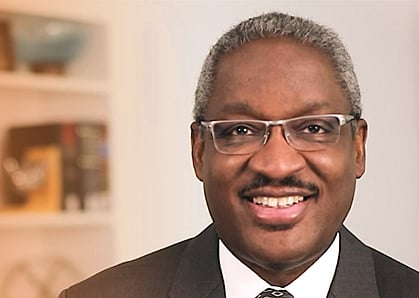Evolving P3 Policy Holds Promise For Infrastructure
A community’s infrastructure is one of the most significant indicators of its ability to sustain economic growth, support job creation and remain competitive in an increasingly global economy. Yet, as major American cities — from New York and San Francisco to Miami, Houston and Atlanta — experience unprecedented development and urban migration, they are also struggling to allocate the necessary funding to keep pace with this current rate of growth.
According to the American Society of Civil Engineers, America’s federal, state and local governments must spend $3.6 trillion through 2020 to put the nation’s critical systems in adequate shape. Without higher spending, the group projects the costs of travel delays, power and water outages will reach $1.8 trillion by 2020.
Fortunately, our local governing bodies recognize this need and are taking steps to keep pace with the current rate of growth. Numerous infrastructure projects are underway that are critical to our communities and to a more sustainable future.
Roads and sidewalks are undergoing necessary repairs; overtures in public transit will connect some of our most densely populated neighborhoods to our urban core; steps are being taken to overhaul our education system to meet the needs of a growing inner-city community; and our public works systems are being improved to meet current capacity. But as budgets constrict and the list of needs grow, our government’s ability to go it alone becomes more challenging.
The private sector has the ability, the creativity and the capital to fill this gap — and there has been a renewed focus on successful public-private partnership (P3) models — and the public sector has created a vehicle by which to access this. What was once a three- to four-year process through public procurement and often costing the private and public sectors millions of dollars and a failed process, has become an immediate path forward for the private sector to proactively engage government leadership with potential solutions.
Nowhere was this desire for new approaches to public-private sector collaboration more apparent than at the recent P3 Hub Southeast Conference, held in Miami recently. More than 2,000 private and public sector leaders from across the country and internationally descended on Miami for this two-day conference to discuss existing infrastructure needs and the future of P3 partnerships to achieve them.
As a leader in P3 and a city on the front lines of its implementation, Miami proved to be a fitting forum for identifying the latest opportunities in P3 for infrastructure improvements. While most states throughout the country still lack comprehensive P3 legislation, Florida, and Miami in particular, has proven to be a leader in this arena. Over two decades ago, the state first enacted a statute allowing the use of P3s for the development of transportation facilities, and in June 2013, Gov. Rick Scott signed into law a bill that provides public entities across the state with the tools to complete long-overdue infrastructure projects in a variety of sectors.
A number of positive developments are also taking shape on the federal level. Earlier this year, the Obama administration proposed the creation of a new kind of municipal bond, Qualified Public Infrastructure Bonds (QPIB), as a way to extend the benefits of municipal bonds to public-private partnerships. While the QPIB program is not yet enacted, it underscores a continued desire by government — federal, state and local — to promote P3s as a way of procuring goods and services and meeting the public need. The proposed program would widen the scope of financing for different types of infrastructure projects, including airports, ports, mass transit, solid waste disposal, sewer, and water, and more surface transportation projects.
The conference addressed the promise this new proposal could hold in addition to the existing federal programs in place to support municipal infrastructure improvements. For example, the Transportation Infrastructure Finance and Innovation Act (TIFIA) provides federal credit assistance with fixed rates that are often lower than what most borrowers can obtain in the private market. By providing greater access to capital, TIFIA can help advance qualified, large-scale projects that might otherwise be delayed because of size, complexity or uncertainty over the timing of revenues. Additionally, the federal government’s Private Activity Bonds Program has been used by local and state governments to finance over $10 billion of roads, tunnels and bridges, by increasing flexibility for P3 financing to generate more private sector participation in large-scale P3 projects.
Beyond credit and bond incentives, the federal government also has the authority to exchange real property as an alternative procurement method. For example, the Federal Bureau of Investigation in Washington, D.C., was in urgent need of new headquarters but lacked the funding to shoulder the full costs of construction. Through real-property exchange, the FBI was able to exchange its existing location, the J. Edgar Hoover Building, which sat on high-valued land. In turn, the private sector developer agreed to build the FBI’s new headquarters on a secondary location.
As yet another indication that P3 continues to grow in popularity, the conference underscored the growing use of unsolicited proposals, as a means for the private sector to provide proactive solutions for public sector needs. This is increasingly being seen in California, Puerto Rico and Texas. Florida should also soon begin seeing a similar trend take hold, as the state’s new P3 legislation now authorizes unsolicited proposals from the private sector.
While P3 legislation continues to expand and evolve both at the local and federal levels, it is clear that we are inching closer to putting the right pieces in place to solve our infrastructure challenges. Collectively, the private and public sectors have the ingredients, the leadership and the resolve to successfully meet the needs of our communities today while ensuring smart growth for the future.
This article is reprinted with permission from Law360.
